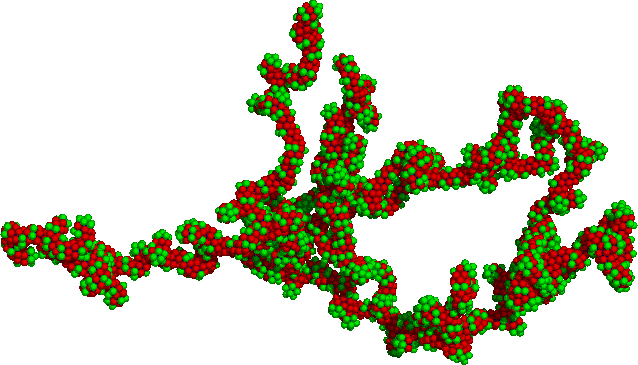Credit & Copyright: E. L. Wright
(UCLA)
Explanation:
Our universe is a very dusty place.
Dust usually shows its presence by blocking out
light emitted from stars or nebulae behind it,
sometimes creating the illusion of a
horse's head or a
sombrero hat.
But nobody really knows what a typical
interstellar dust grain looks like.
By studying how dust
absorbs,
emits, and
reflects light,
astronomers do know that interstellar dust
is much different than the
cell and
lint based dust found around a
typical house.
Interstellar dust grains are composed mostly of
carbon,
silicon, and
oxygen and are usually
less than about 1/1000 of a millimeter across.
Recent work indicates that most
dust
grains are not spherical.
The above picture shows the result of a
fractal adhesion model for dust grains involving
random conglomerates of spherical compounds of different properties,
here artificially highlighted by different colors.
1999 2000 2001 2002 2003 2004 2005 2006 2007 2008 2009 2010 2011 2012 2013 2014 2015 2016 2017 2018 2019 2020 2021 2022 2023 2024 2025 |
Январь Февраль Март Апрель Май Июнь Июль Август Сентябрь Октябрь Ноябрь Декабрь |
NASA Web Site Statements, Warnings, and Disclaimers
NASA Official: Jay Norris. Specific rights apply.
A service of: LHEA at NASA / GSFC
& Michigan Tech. U.
|
Публикации с ключевыми словами:
dust - interstellar dust - Межзвездная пыль
Публикации со словами: dust - interstellar dust - Межзвездная пыль | |
См. также:
Все публикации на ту же тему >> | |
